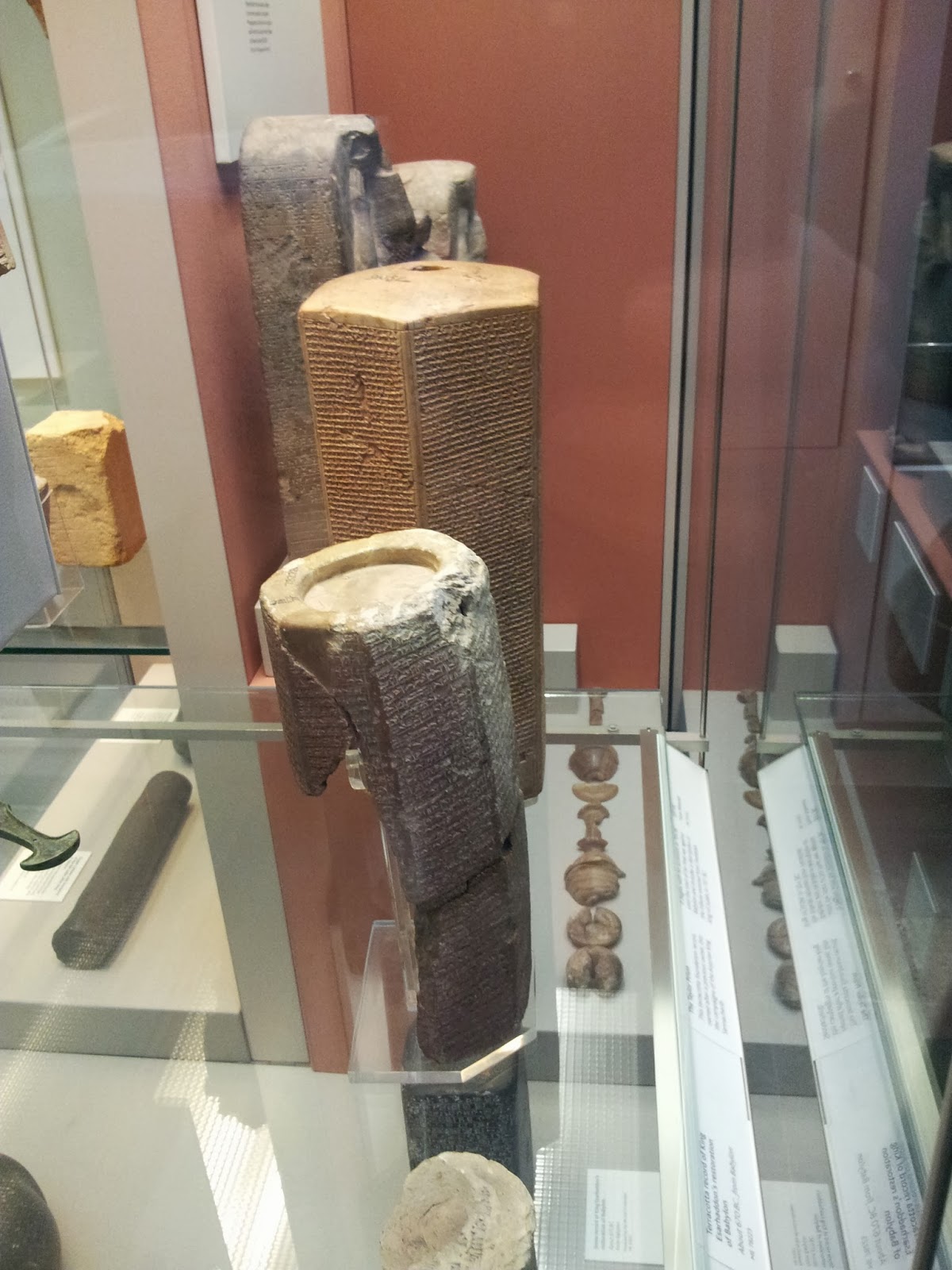Class field trip to the British Museum
Our study booklet, "God's Amazing Book" asks us to examine the history of the Bible, the validity of the Bible and the formation of the Bible - among other scripture searches.
One of our servant team members has been to Israel several times. Each time she tours, she says she is surprised at the number of times the guide declares, "well we would see this, but it is now housed in the British Museum". How lucky are we, in London, thus very capable of going on any given day to see these artifacts! However, as we know, artifacts that are important for Christians and the historicity of the Bible often don't have large signs nearby stating "Come and See!! This is an important artifact for Christians!" We had heard of Christian tour guides who help direct groups to find the important Christian items, and decided it would be a great class outing to do just such a tour ourselves.
Our guide, Fiona Cater, took us on a one-hour and forty-five minute journey to see some of the great items relating to the Bible.
Here are a few examples from our tour:
 |
| Room #55 - Assyrian prism |
"They said there was no such king as Hezekiah"
Then they discovered:
Sennacherib's Prism Reveals King Hezekiah
This six-sided hexagonal clay prism, commonly known as the Taylor Prism, was discovered among the ruins of Nineveh, the ancient capital of the Assyrian Empire. It contains the Annals of Sennacherib himself, the Assyrian king who had besieged Jerusalem in 701 BC during the reign of king Hezekiah. On the prism Sennacherib boasts that he shut up "Hezekiah the Judahite" within Jerusalem his own royal city "like a caged bird." This prism is among the three accounts discovered so far which have been left by the Assyrian monarch of his campaign against Israel and Judah.
 |
| Room 55 - From the time of Daniel |
The panel shows a pacing, roaring lion and once was part of King Nebuchadnezzar II’s throne room in his palace in the ancient city of Babylon, Iraq. Nebuchadnezzar II reigned from 605-562 BC, and supposedly had the hanging gardens of Babylon built for his queen. Although there is little evidence to confirm his passion for gardening, it is certain that Nebuchadnezzar commissioned other major building projects in Babylon, to glorify the capital of his empire. Inscriptions stamped on bricks reveal the extent of these works. In the city of Babylon, glazed bricks in bright shades of blue, yellow and white were used to create public monuments that emphasised the power of the king and the gods. In Nebuchadnezzar’s throne room the roaring lions emphasized the power and might of the Babylonian king, whose empire stretched from the Persian Gulf to the Mediterranean and from the Caucasus to northern Arabia.
 |
| Room 52 - glazed tile from the Persian Empire |
Achaemenid Persian, late 6th century BC
From Susa, south-west Iran
From the palace of Darius I, ruler of the largest empire in antiquity
This panel is made of polychrome glazed bricks which were found by French excavators scattered in a courtyard of the palace built by the Persian king Darius I (522-486 BC). At least 18 figures have been restored. It was part of a larger frieze depicting rows of guards, perhaps the 'immortals' who made up the king's personal bodyguard. The arrangement of the figures may have been similar to the rows of sculptured guards carved in relief at Persepolis. According to a foundation inscription at Susa, the craftsmen who made the brick panels came from Babylonia where there had been a tradition of this sort of architectural decoration.
Linked to the city of Sardis in western Anatolia by a 'royal road', Susa was the most important administrative centre of the Achaemenid Persian empire and the court probably spent at least part of each year there. Darius undertook much building at the site. Amongst his most impressive projects was the Apadana or audience hall and an adjoining palace where this panel was discovered.
 |
| Room 49 - the first image of Jesus in Britain |
Ready to take a tour yourself?
Fiona's information:
http://christianitytours.com/index.html
No comments :
Post a Comment